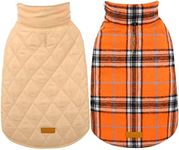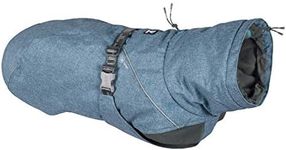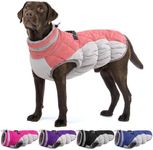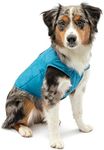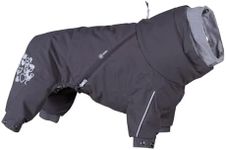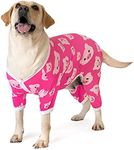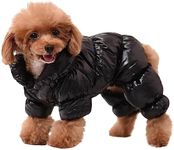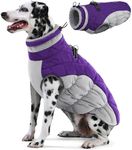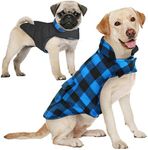Buying Guide for the Best Dog Winter Coats
Choosing the right winter coat for your dog is essential to keep them warm, comfortable, and protected during the cold months. When selecting a dog winter coat, consider factors such as the coat's material, insulation, size, and additional features. Understanding these key specifications will help you make an informed decision that best suits your dog's needs and lifestyle.MaterialThe material of a dog winter coat is crucial as it determines the coat's durability, warmth, and comfort. Common materials include fleece, wool, and synthetic fabrics like polyester. Fleece is soft and provides good insulation, making it ideal for mild to moderately cold weather. Wool is excellent for very cold conditions due to its superior warmth but can be heavier. Synthetic fabrics like polyester are often water-resistant and durable, suitable for wet and snowy conditions. Choose a material based on your dog's activity level and the typical weather conditions in your area.
InsulationInsulation refers to the coat's ability to retain heat and keep your dog warm. It is typically provided by materials like down, synthetic fibers, or thermal linings. Down insulation is lightweight and highly effective in trapping heat, making it suitable for extremely cold climates. Synthetic insulation is also effective and tends to be more water-resistant, which is great for wet conditions. Thermal linings can add an extra layer of warmth without adding bulk. Consider your dog's tolerance to cold and the severity of your local winter when choosing the level of insulation.
Size and FitThe size and fit of a dog winter coat are essential for comfort and effectiveness. A coat that is too tight can restrict movement, while one that is too loose may not provide adequate warmth. Measure your dog's chest, neck, and back length to find the right size. Many brands offer size charts to help you choose the correct fit. Ensure the coat covers your dog's back and belly adequately without hindering their ability to walk, run, or relieve themselves. A well-fitted coat will keep your dog comfortable and warm without causing any discomfort.
Water ResistanceWater resistance is an important feature for a dog winter coat, especially if you live in an area with frequent rain or snow. A water-resistant coat will keep your dog dry and prevent the coat from becoming heavy and cold when wet. Look for coats made from materials like polyester or those with a water-resistant coating. If your dog spends a lot of time outdoors in wet conditions, prioritize a coat with good water resistance to ensure they stay warm and dry.
Ease of UseEase of use refers to how simple it is to put the coat on and take it off your dog. Features like adjustable straps, Velcro closures, and zippers can make the process quicker and more convenient. Consider your dog's temperament and how cooperative they are when dressing. A coat that is easy to put on and take off will make your life easier and ensure your dog is more likely to wear it without fuss.
Reflective ElementsReflective elements on a dog winter coat enhance visibility during low-light conditions, such as early morning or evening walks. These elements can include reflective strips, piping, or patches. Increased visibility helps keep your dog safe by making them more noticeable to drivers and other pedestrians. If you often walk your dog in low-light conditions, look for a coat with reflective features to ensure their safety.
